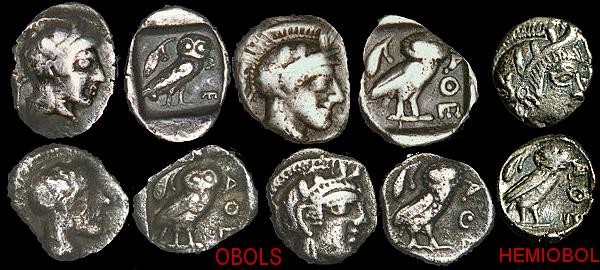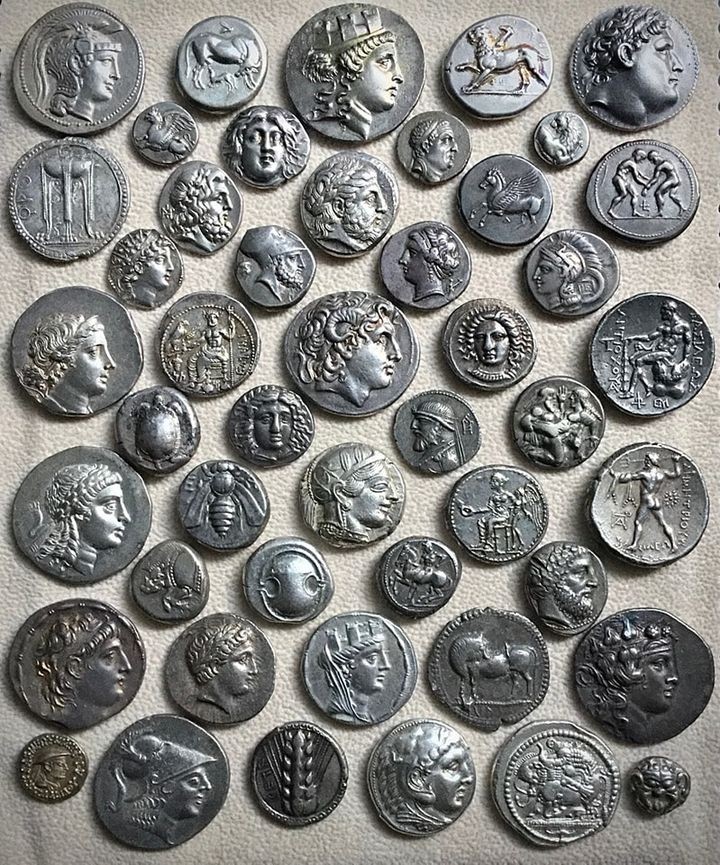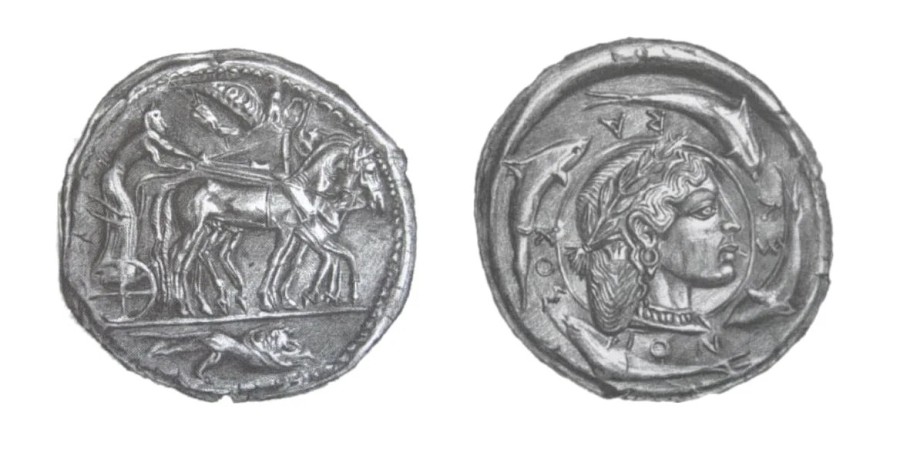-This magnificent Old Style Athenian tetradrachm was struck in the ancient Greek city-state of Athens during the height of its cultural, political and military power between 454 and 404 BC.
-This ancient Athenian Tetradrachm measures 23.3 mm (0.92 inches) in diameter and weighs 17.14 grams (0.5511 troy ounces) of nearly pure silver, which was most likely extracted from the famous Laurium Mines of nearby southern Attica.
-The obverse of the coin portrays the head of the goddess Athena wearing a crested helmet that is decorated with olive leaves. The back shows Athena’s mascot, the Little Owl or Minerva Owl (Minerva was the Roman equivalent of Athena), along with a sprig of olive leaves and a crescent moon. In addition, the reverse of all Old Style Athenian tetradrachms have the inscription “AΘE”, which translates from ancient Greek as “Of the Athenians”.

-The Greek city-state of Athens was at the pinnacle of its power when this coin was minted in the late 5th century BC. It was during this period that the influential Athenian politician Pericles ordered the construction of the world-famous Parthenon temple. It was also during this time that the great philosopher Socrates honed his unconventional theories in the streets of Athens.
-Athenian tetradrachms were known as “owls” or “girls” in ancient times. These impressive silver pieces are the world’s first international trade coin and circulated widely in the ancient Mediterranean Basin. The purchasing power of each owl was equivalent to about 4 days’ wages for a skilled craftsman.
-The condition of this Athenian tetradrachm is excellent. It has been certified by the third-party grading service NGC (Numismatic Guarantee Corporation) as XF (Extra Fine) with a 4/5 strike and a 4/5 surface. This isn’t perfect, but it is very nearly as good as it gets with Old Style Athenian silver owls. You may be able to find an example in marginally better condition, but you would pay dearly for the honor.
-Old Style Athenian tetradrachms are the iconic ancient coin. They are held in a level of esteem by knowledgeable collectors that all other ancient coins can merely aspire towards.
-A full and well-centered strike is almost as important a consideration for an ancient coin as its condition. Happily, this ancient Athenian tetradrachm is splendidly struck. All the major design elements are completely visible on the coin, including Athena’s face, the Minerva Owl and the AΘE legend. This is even more remarkable given the slightly irregular shape of the flan. The only design feature that is off the flan is the crest of Athena’s helmet, but that is typical for this series.
-This Old Style Athenian tetradrachm is being offered for sale by Forvm Ancient Coins, a trusted ancient coin dealer. In addition, it has been third-party certified by NGC, which guarantees its grade and authenticity.
-Due to their historical importance and pleasing design, there is perennially strong demand for silver Athenian tetradrachms from ancient coin collectors. As a result, their prices almost never drop, but instead creep steadily higher year after year. Consequently, I believe the $1,900 asking price for this breathtaking Athenian tetradrachm is fair.
Certified Ancient Greek Silver Coins For Sale

-Few people can afford to spend almost $2,000 on a single ancient coin. However, as expensive as it seems today, the price for this silver Owl will undoubtedly be higher in the years to come. In fact, an Athenian tetradrachm in this condition could have been purchased for perhaps $1,000 only 15 or 20 years ago. But you won’t be able to touch a dec

ent specimen for that price today.
-Counterfeit ancient Greek coins are ubiquitous in the secondary market. Because of this, I believe anyone interested in investing in these ancient masterpieces must exclusively purchase from a highly reputable ancient coin dealer or only buy examples that have been third-party certified by ANACS or NGC. Luckily, this Athenian tetradrachm ticks both of those boxes.
-This coin has a noticeable die-crack on its reverse that is original to its minting. Ancient coin enthusiasts understand that minor idiosyncrasies like this are simply a fact of life when collecting ancient coins. I do not believe that this die crack significantly impacts the coin’s value or desirability.
